Baton Rouge bands together, reeling from back-to-back tragedies
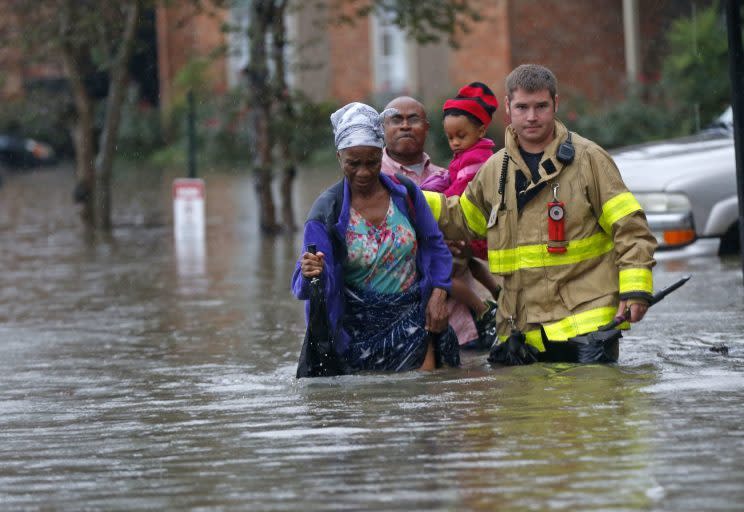
The summer of 2016 will go down as one of the most painful in Baton Rouge’s history. Its residents were still recovering from two violent tragedies — the shooting of Alton Sterling and an ensuing deadly ambush on law enforcement — when devastating floodwaters engulfed great swaths of land, destroyed thousands of homes and businesses, and killed more than a dozen people.
The tragedies last month were the result of human actions and were understood as the tension between police and local residents that has been boiling over lately, making the lines between black and white all too stark. The flooding, however, was an indiscriminate act of nature that affected everyone.
Ernest Johnson, president of the Louisiana NAACP, told Yahoo News that these three “disasters” should prompt Americans to look into their hearts and think about the direction our country is headed in. He said only one of these tragedies was an act of God. The others could have been avoided entirely.
“It’s really now time, I believe, that we come to a point where we just make the decision that we’re going to live together in peace and harmony, because I think the country is going in the wrong direction with the guns and the killing,” he said over the phone.
A Baton Rouge police officer shot and killed Alton Sterling, a 37-year-old black man, outside a convenience store on July 5. Video footage of the confrontation led to widespread unrest and further tarnished the already troubled relationship between law enforcement and the African-American community. On July 18, in retaliation, a 29-year-old veteran from Missouri ambushed Baton Rouge cops — killing three and wounding three others.
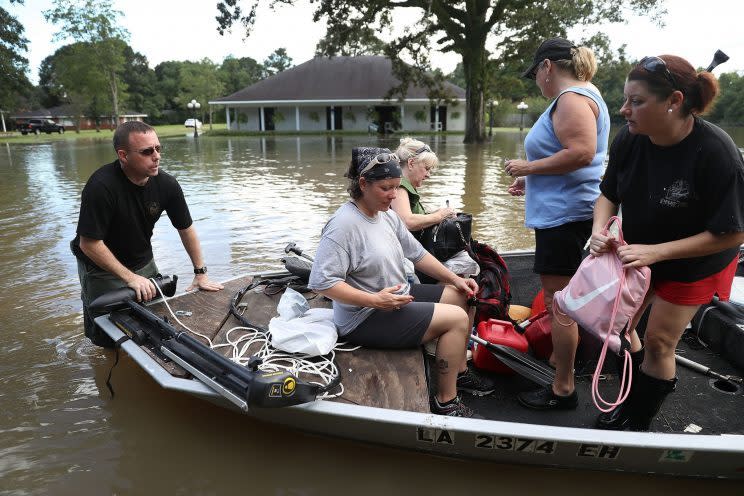
Sarah Wampler, 30, has deep Baton Rouge roots. She was born in Gonzales, a suburb of Baton Rouge, and her family has always lived in the city or just south of it in Ascension Parish, which was also devastated by the flood. She went to high school in Baton Rouge and has lived there since her days at LSU.
Wampler, who owns a Highland Road bridal shop, Bustle Bridal Gowns and Accessories, said a lot of negative press has surrounded her beloved community this summer, and some of it was warranted: There’s still progress to be made in race relations and police training, and Sterling’s death highlighted an area of injustice that still needs to be solved.
Slideshow: ‘Unprecedented’ flooding slams Gulf Coast >>>
“What the press neglected to highlight about our area is the passionate love that we have for where we live and the people who live here. After the death of Alton Sterling and the terrible assault on our police officers, I overheard countless ‘How are you? Everything’s going to be OK’ conversations all around the city between people of all races,” she told Yahoo News.
A big story in Baton Rouge that didn’t command the national news cycle the way either tragedy did was #25onthe25th. More than 100 restaurants in the Baton Rouge metropolitan area pledged 25 percent of their sales on July 25 for the families of the slain police officers. There wasn’t an empty table at a Baton Rouge restaurant. Lines were out the door, and wait times were over an hour at places that never see business like that on a weeknight, according to Wampler.
“When we think people need our help, we show up in vast numbers and with a passion that is not easily understood by anyone not from here,” she said.
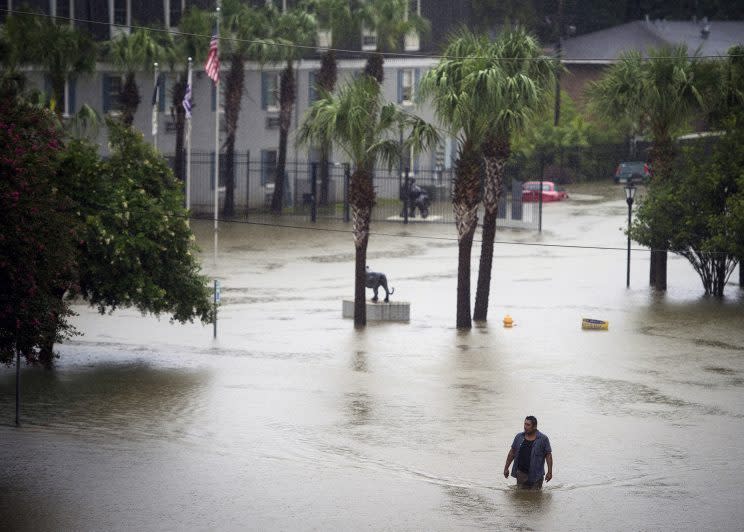
Wampler has spent a lot of time cooking and delivering meals to her fellow Louisianans who weren’t so lucky.
“For every person who has been devastated by this storm, I know two other people who are organizing meal deliveries and shelter donations, offering their houses to those who need them, showing up at neighbors’ houses to help them put all their possessions in the trash pile at the road,” she said. “And, naturally, some of us have had our kitchens going all day every day making sandwiches for relief workers and those in shelters and hot meals for people who are suddenly ripped from their homes.”
Locals with flat-bottomed boats showed up wherever they could launch their boats to reach as many people as possible, Wampler said.
“That’s just who we are,” she added. “The ‘Cajun Navy’ just shows up — with life jackets, rain boots, food and water for the people they rescue — and bug spray. Because — Louisiana.”
Earlier this week, Baton Rouge resident Chris Macaluso, 40, told Yahoo News about his experience in the Cajun Navy of local first responders setting off in boats to rescue their neighbors.
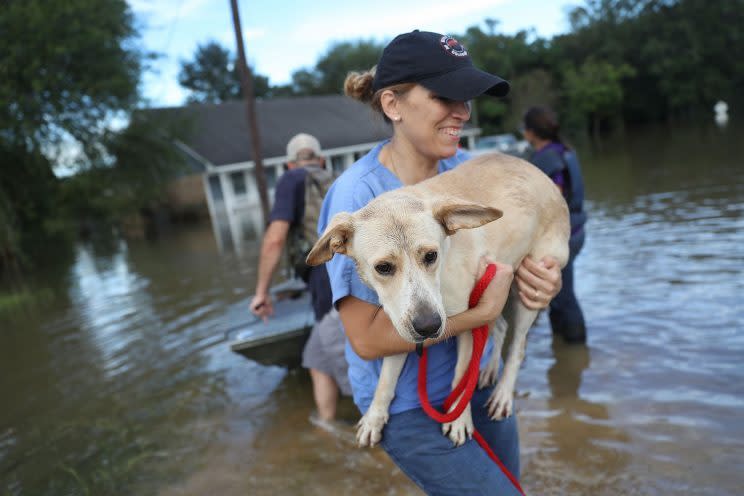
“I pulled up to people’s front doors, and they got out of their houses into the boats, and we pulled them to the highest ground we could,” he said. “Volunteers are pulling thousands and thousands of people out.”
The floodwaters are mostly receding across southern Louisiana, but the struggle is just beginning. Many of the flood victims, Macaluso said, lost everything and still need basic necessities: drinking water, clothes, deodorant, toothpaste, etc.
“We took people out who were carrying small bags, their purses with their medicines,” Macaluso said. “We also took people out who didn’t have shirts on or were just in T-shirts. I don’t know where they are all winding up, but hopefully they are getting to shelters.”
East Baton Rouge Sheriff Sid Gautreaux said during a press conference on Tuesday that more than 150 employees in his department had been displaced by flooding. But many never stopped doing their jobs during the crisis, he said.
“We’re all in this together, and we have a long way to go. We received a tremendous outpouring of support and assistance from other agencies as well as the community,” he said. “Once again, I can’t tell you how proud I am of the response that we’ve received from the Louisiana Sheriff’s Association. We’ve got sheriffs from my parish, from Livingston Parish, and other affected parishes who have come here from all over the state to lend us assistance.”
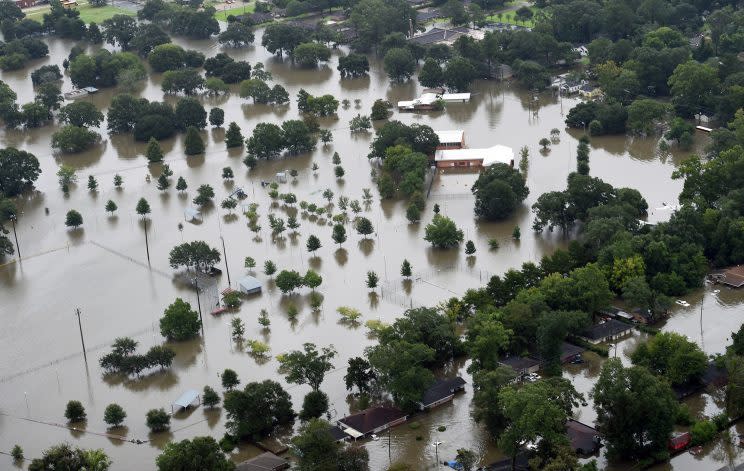
President Obama signed a major disaster declaration for Louisiana on Sunday, making federal funding available to people affected in the East Baton Rouge, Livingston, St. Helena and Tangipahoa parishes, as well as to the state and local governments and eligible nonprofits responding to the disaster. It appears unlikely that the president will cut short his vacation on Martha’s Vineyard to visit Louisiana. Republican presidential candidate Donald Trump arrived Friday to survey the damage with his running mate, Mike Pence.
As of Friday morning, more than 95,000 people and households registered with the Federal Emergency Management Agency (FEMA) for assistance, and more than $16.7 million has been approved to help survivors with rental assistance, home repairs and other serious needs.
“That’s the new number there that’s gone out the door to survivors. You’ll see that number continue to grow throughout the day and in the coming days as well,” Rafael Lemaitre, the director of public affairs for FEMA, told Yahoo News.
More than 22,000 survivors with National Flood Insurance Program policies have submitted claims for flood loss, and FEMA issued $1 million in advance payments to policyholders. More than 1,000 FEMA personnel (including more than 560 housing inspectors) are currently on the ground in Louisiana.
Johnson, who also lives in Baton Rouge, said he hopes that this summer of tragedy will inspire a change in the way people treat one another that sticks around long after the current crisis.
“I would ask everybody to pray for south Louisiana and Louisiana as a whole, and pray for our safety and that we will overcome this flooding disaster,” he continued. “I just think we need to have a change of heart. I think we need to see more love in our communities rather than hate.”
There are many ways to help Louisiana right now. Visit volunteerlouisiana.gov to find out about volunteer and donation opportunities across the state.


